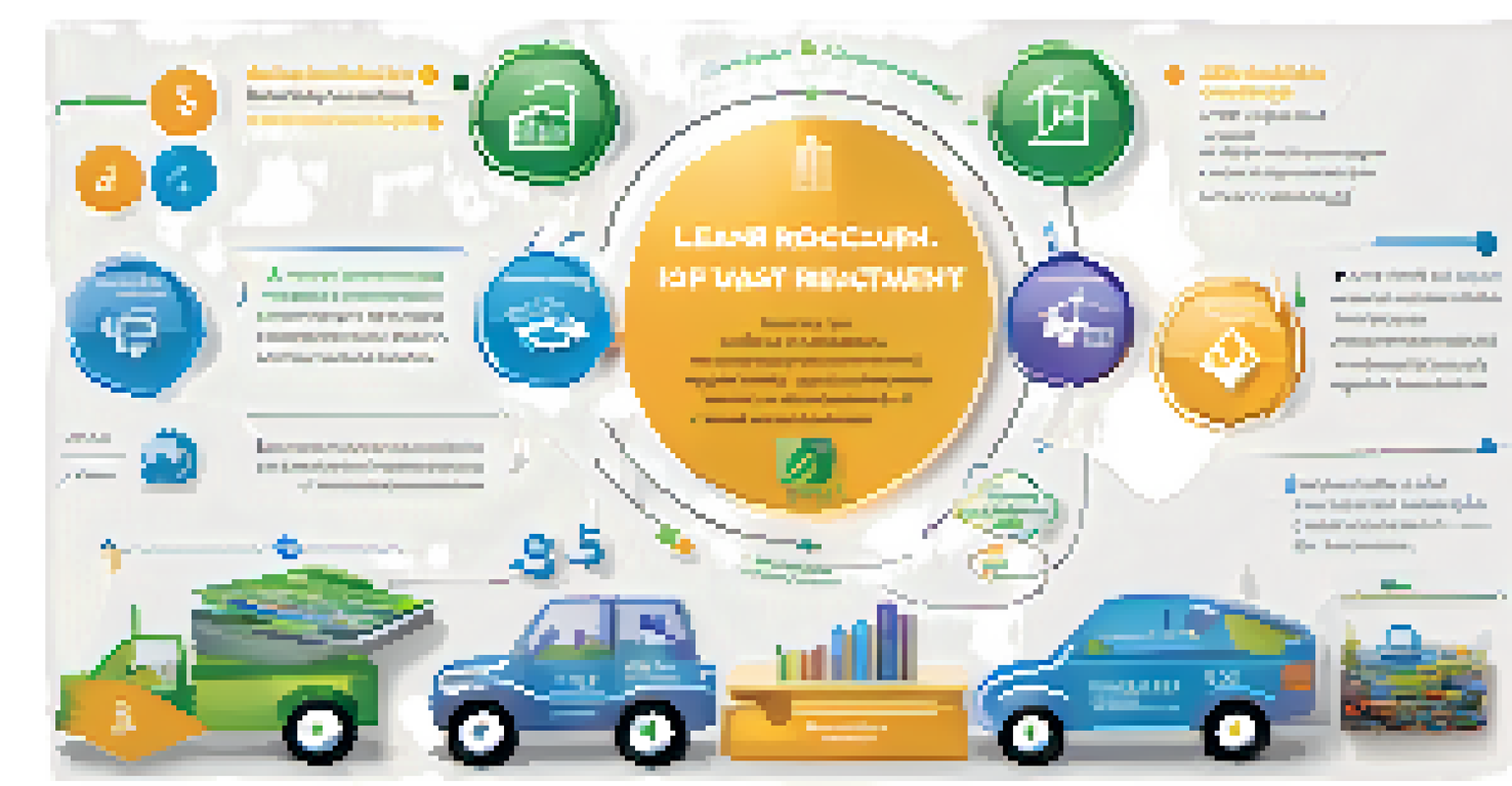Reducing Waste in Software Development through Lean Practices

Understanding Lean Principles in Software Development
Lean practices originate from manufacturing but have found a strong foothold in software development. The core idea is to maximize value while minimizing waste, which can often lead to more efficient processes. By focusing on what truly matters to the customer, teams can eliminate unnecessary steps in their workflows.
The most efficient and effective method of conveying information to and within a development team is face-to-face conversation.
In software development, waste can manifest in various forms, such as redundant code, excessive documentation, or waiting times. Recognizing these wastes is the first step toward a more streamlined process. Lean principles encourage developers to continuously assess their workflows and make adjustments as needed.
Adopting a lean mindset can transform how teams approach projects, emphasizing collaboration, feedback, and iterative improvements. This shift not only enhances productivity but also fosters a culture of innovation, where every team member feels empowered to contribute to the overall efficiency.
Identifying and Eliminating Waste in Development
The first step in reducing waste is to identify it. Common forms of waste in software development include overproduction, waiting times, and unnecessary features. Teams can conduct value stream mapping, a visual tool that helps highlight these inefficiencies in their processes.

Once waste is identified, the focus shifts to elimination. For instance, if a team finds that meetings often lead to waiting time and confusion, they can streamline communication by using collaboration tools. This not only saves time but also enhances clarity across the team.
Maximizing Value, Minimizing Waste
Lean principles in software development focus on enhancing value for customers while reducing unnecessary processes and inefficiencies.
Eliminating waste is not a one-time task; it requires ongoing vigilance and adaptability. By fostering an environment where team members can voice concerns and suggest improvements, organizations can remain agile and responsive to change, ensuring continuous improvement.
Implementing Continuous Improvement with Lean
Continuous improvement, or 'Kaizen' in lean terminology, is a fundamental concept in reducing waste. This philosophy encourages small, incremental changes rather than major overhauls, which can be daunting. By regularly evaluating processes and seeking feedback, teams can make manageable adjustments that yield significant results over time.
Without data, you're just another person with an opinion.
One practical example of continuous improvement in software development is the regular retrospective meetings held by Agile teams. During these meetings, team members discuss what went well, what didn't, and what can be improved. This reflective practice empowers teams to learn from their experiences and make informed decisions moving forward.
The beauty of continuous improvement is that it creates a culture of learning and adaptability. Team members feel more invested in their work when they see that their input leads to real change, ultimately enhancing job satisfaction and productivity.
Encouraging Collaboration and Cross-Functionality
Collaboration is a cornerstone of lean practices in software development. When teams work together across different functions—such as development, testing, and operations—they can share insights and identify areas of waste more effectively. This collaborative environment fosters open communication and mutual understanding.
Cross-functional teams can lead to faster problem-solving and more innovative solutions. For instance, when developers and testers collaborate closely, they can identify potential issues earlier in the process, reducing the need for rework later. This not only saves time but also minimizes frustration and enhances product quality.
Continuous Improvement is Key
Adopting a culture of continuous improvement, or 'Kaizen,' empowers teams to make incremental changes that significantly enhance productivity over time.
To encourage collaboration, organizations can implement practices like pair programming or regular brainstorming sessions. By breaking down silos and encouraging diverse perspectives, teams become more agile, responsive, and capable of delivering high-quality software efficiently.
Utilizing Agile Methodologies to Reduce Waste
Agile methodologies align closely with lean principles, focusing on iterative development and customer feedback. By breaking projects into smaller, manageable increments, teams can deliver value more frequently while minimizing waste. This iterative approach allows for quick adjustments based on user feedback, ensuring that the final product meets customer needs.
One key aspect of Agile that supports waste reduction is the concept of 'minimum viable product' (MVP). By developing a basic version of a product that meets essential user needs, teams can gather feedback early and refine their offering before full-scale development. This approach reduces the risk of building features that customers do not want.
Incorporating Agile practices such as Scrum or Kanban can further enhance efficiency. These frameworks promote transparency and accountability, helping teams stay focused on delivering value while continuously assessing and eliminating waste.
Leveraging Technology for Lean Software Development
Technology plays a crucial role in supporting lean practices in software development. Tools for project management, version control, and automation can significantly reduce manual tasks and streamline workflows. By utilizing these technologies, teams can focus more on delivering value rather than getting bogged down by administrative work.
For example, automated testing tools can help ensure that code changes do not introduce new bugs, reducing the need for extensive manual testing and rework. This not only saves time but also enhances product quality, allowing teams to deliver software more rapidly.
Collaboration Drives Efficiency
Encouraging cross-functional collaboration among teams leads to faster problem-solving and higher-quality software delivery.
Additionally, cloud-based collaboration tools facilitate real-time communication and file sharing, making it easier for distributed teams to work together seamlessly. By embracing technology, organizations can create a leaner, more efficient development process that maximizes productivity.
Measuring Success: Metrics for Lean Software Development
To truly embrace lean practices, it's essential to measure success through relevant metrics. Key performance indicators (KPIs) can help teams assess their progress in reducing waste and improving efficiency. Metrics such as cycle time, lead time, and defect rates provide valuable insights into the effectiveness of lean initiatives.
For instance, tracking cycle time—the time it takes for a task to move from start to completion—can reveal bottlenecks in the development process. By analyzing this data, teams can identify areas for improvement and implement targeted solutions to enhance workflow.

Moreover, fostering a culture of accountability means that these metrics should be shared across the team. When everyone understands how their contributions impact overall success, they become more motivated to engage in waste reduction and continuous improvement efforts.
The Long-Term Benefits of Lean Practices
While implementing lean practices in software development may require an initial investment of time and effort, the long-term benefits are substantial. By reducing waste, teams can significantly enhance productivity, leading to faster delivery times and higher-quality products. This not only satisfies customers but also strengthens the organization's reputation in the industry.
Additionally, a culture of continuous improvement fosters employee engagement and satisfaction. When team members feel empowered to contribute to process improvements, they are more likely to take ownership of their work and remain committed to the organization. This can lead to lower turnover rates and a more cohesive team.
Ultimately, embracing lean practices in software development is not just about cutting costs; it's about creating a more effective, innovative, and responsive organization. By prioritizing value and efficiency, companies can thrive in an increasingly competitive landscape.